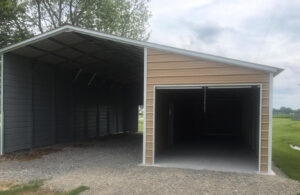
An agricultural pole barn is a versatile, cost-effective structure widely used in farming and rural settings. These barns, also known as post-frame buildings, are constructed using a method that involves setting large poles or posts into the ground, which serve as the main support framework. The simplicity and efficiency of this construction technique make pole barns a popular choice for farmers and rural property owners.
Key Features and Benefits
Versatility
Agricultural pole barns can serve multiple purposes, ranging from livestock housing and equipment storage to grain storage and workshops. The open interior space, free of load-bearing walls, allows for flexible use and easy reconfiguration to meet changing needs.
Cost-Effective Construction
One of the primary advantages of a pole barn is its affordability. The post-frame construction method requires fewer materials and less labor compared to traditional building methods. The simplicity of the design means that even large structures can be erected quickly and efficiently, reducing overall costs.
Durability
Pole barns are built to withstand various weather conditions. The posts, typically made of treated wood or metal, are anchored deep into the ground, providing stability and resistance to strong winds and heavy snow loads. Additionally, the roof and siding materials can be chosen to enhance durability and longevity, such as metal roofing and siding which are resistant to rust, rot, and pests.
Customization
Farmers can customize their pole barns to suit specific agricultural needs. Features like sliding doors, skylights, and ventilation systems can be incorporated to improve functionality. Interior layouts can be tailored to accommodate livestock stalls, storage areas, and workspaces.
Energy Efficiency
Modern pole barns can be designed with energy efficiency in mind. Insulation, energy-efficient windows, and proper ventilation systems can help maintain a stable indoor environment, reducing energy costs for heating and cooling.
Applications in Agriculture
Livestock Housing
Pole barns provide a safe and comfortable environment for animals, offering protection from the elements. They can be equipped with stalls, feeding areas, and ventilation systems to ensure the well-being of livestock.
Equipment Storage
Agricultural machinery and equipment represent significant investments for farmers. Pole barns offer ample space to store tractors, plows, and other equipment, protecting them from weather damage and theft.
Crop Storage
Grain and hay can be stored in pole barns, keeping them dry and safe from pests. Properly ventilated and insulated barns help maintain optimal conditions for preserving crop quality.
Conclusion
Agricultural pole barns are an invaluable asset to farmers and rural property owners. These structures provide a reliable and customizable solution for various agricultural needs.
